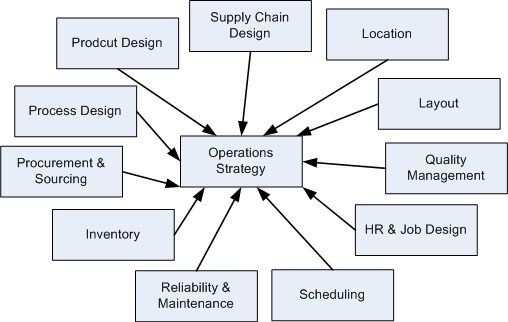Operations Strategy: Unleashing Efficiency and Excellence
In the dynamic landscape of modern business, an effective operations strategy is the cornerstone of success. Today, we embark on a journey to unravel the nuances of operations strategy, exploring how it drives efficiency and excellence in organizations.
Understanding Operations Strategy
Before delving into the intricacies, let’s establish a fundamental understanding of operations strategy.
Operations Strategy Unveiled
Operations strategy is the blueprint that guides an organization’s approach to producing and delivering goods and services. It’s the roadmap that defines how resources will be utilized to achieve operational goals, aligning them with the broader strategic objectives of the company.
The Vital Role of Operations Strategy
Now, let’s explore why operations strategy is indispensable in the business world.
1. Efficient Resource Allocation
Operations strategy ensures that resources – from labor and technology to facilities and capital – are allocated optimally. It answers critical questions such as how to allocate budget, human resources, and technology investments for maximum efficiency and effectiveness.
2. Streamlined Processes
Efficiency is at the heart of operations strategy. It focuses on eliminating bottlenecks, reducing waste, and optimizing workflows. By streamlining processes, organizations can produce higher-quality products and deliver superior services while minimizing costs.
3. Competitive Advantage
In the age of globalization, competition is fierce. Operations strategy provides a competitive edge by enhancing the organization’s ability to adapt to market changes swiftly. This adaptability allows for quicker responses to customer demands and market shifts.

The Intersection of Technology and Operations Strategy
In today’s digital era, technology and operations strategy are inseparable partners in achieving operational excellence.
1. Automation Revolution
Automation is a linchpin of modern operations strategy. It reduces manual intervention, lowers the risk of human error, and accelerates processes. Whether in manufacturing or service delivery, automation enhances efficiency and consistency.
2. Data-Driven Decision Making*
Operations strategy leverages data analytics to make informed decisions. By collecting and analyzing data, organizations gain insights into consumer preferences, market trends, and production efficiency. This data-driven approach empowers them to adjust strategies in real-time.
3. Supply Chain Optimization*
Operations strategy plays a pivotal role in supply chain management. It integrates supply chain operations with overall business objectives, ensuring a seamless flow of goods from suppliers to customers. Technology-driven solutions like supply chain analytics and tracking systems enhance visibility and reliability.

In summary, operations strategy is the linchpin of efficiency and excellence in modern organizations. It’s the guiding force that ensures resources are allocated effectively, processes are streamlined, and technology is leveraged for optimal results. Embracing a robust operations strategy is not a choice; it’s a necessity in the competitive world of business.
In the pursuit of operational excellence, organizations must recognize the symbiotic relationship between operations strategy and technology. By aligning these two forces, companies can navigate the complexities of the modern business landscape, stay ahead of the competition, and deliver exceptional value to customers.

Leave a comment